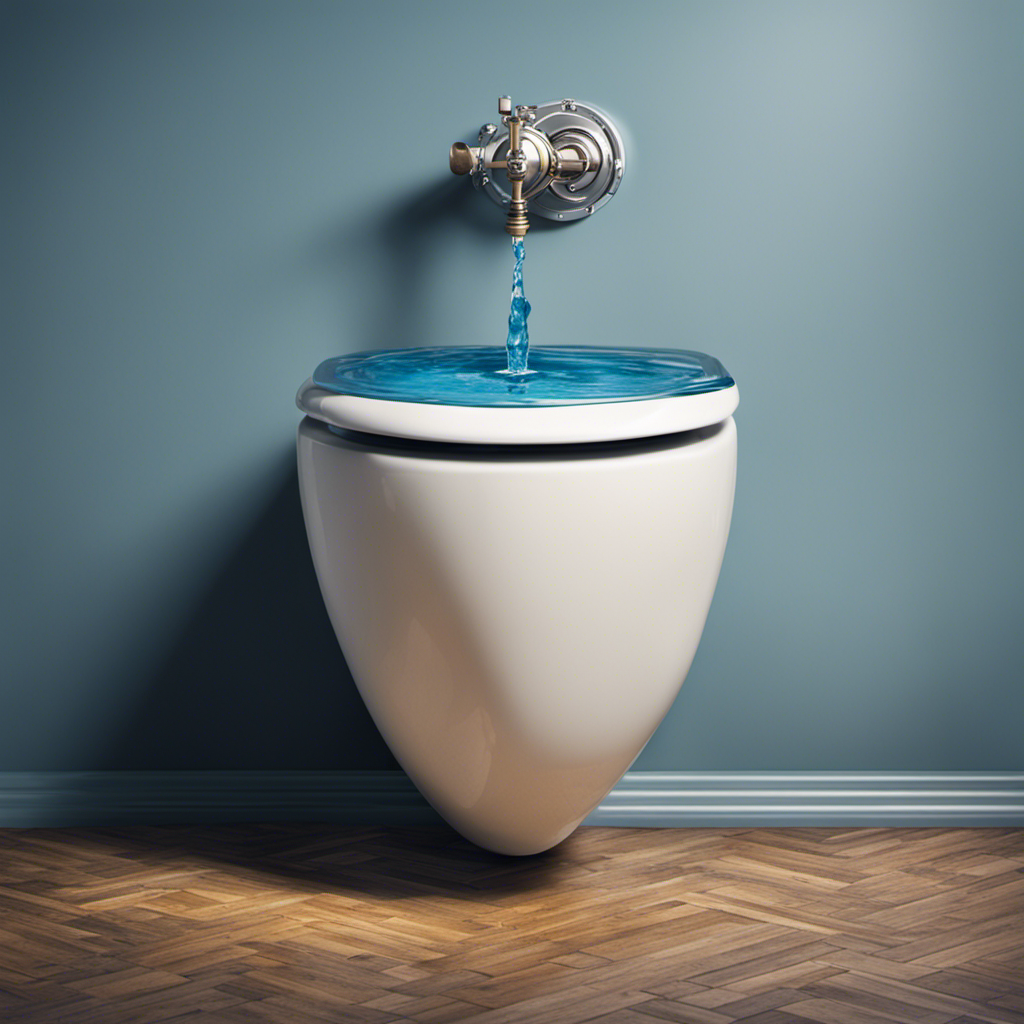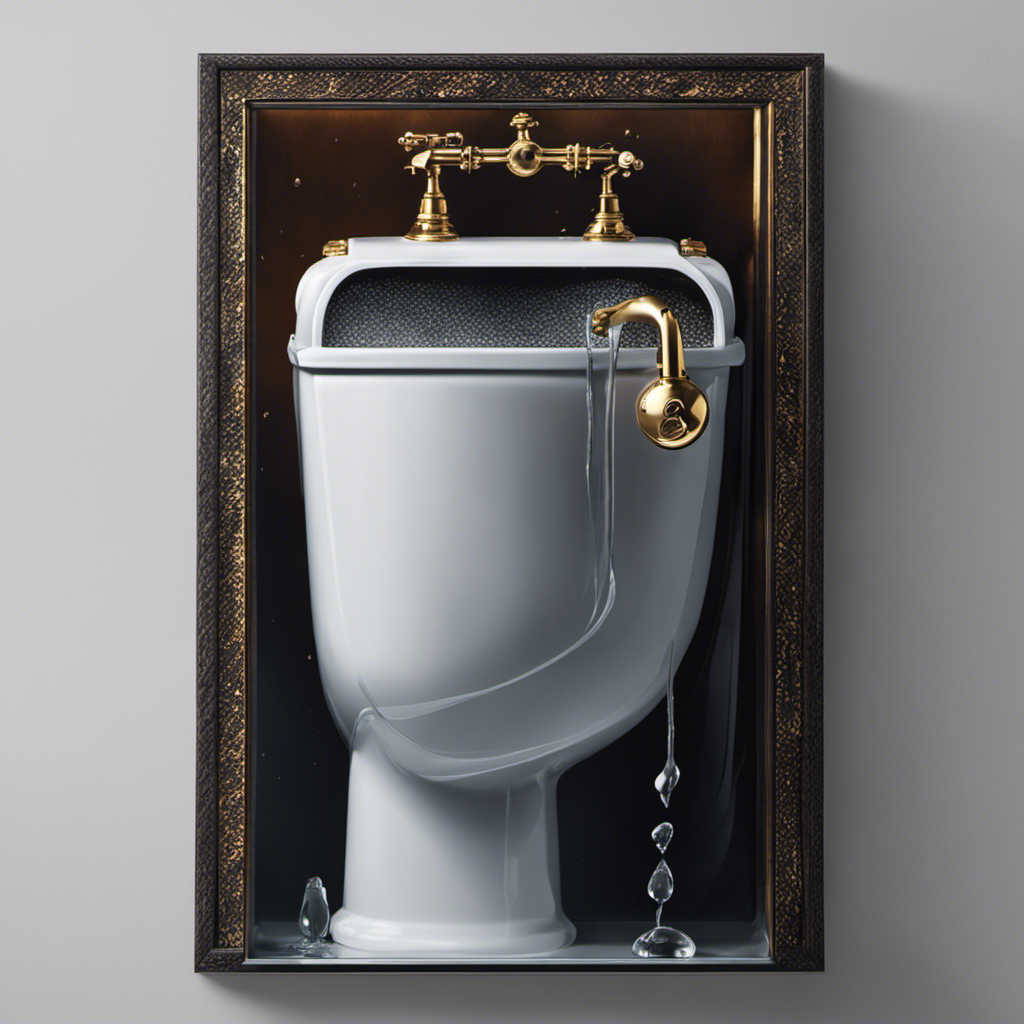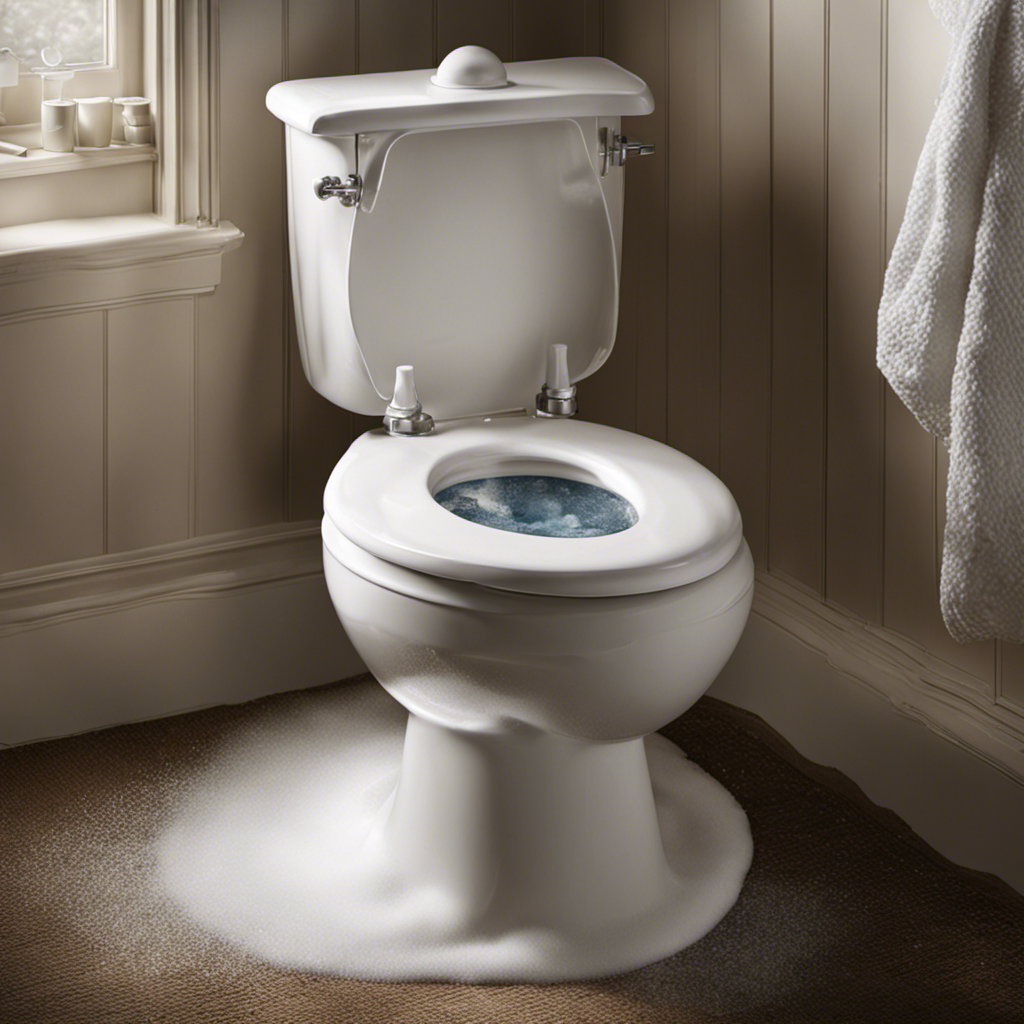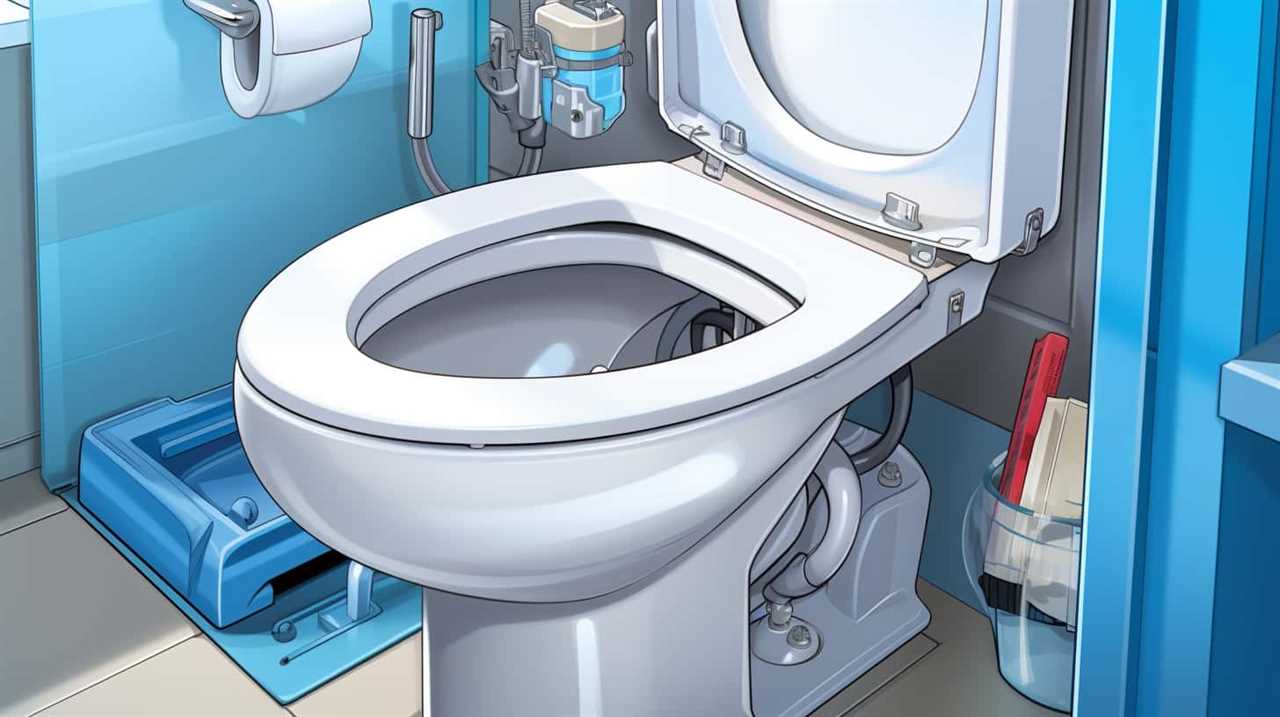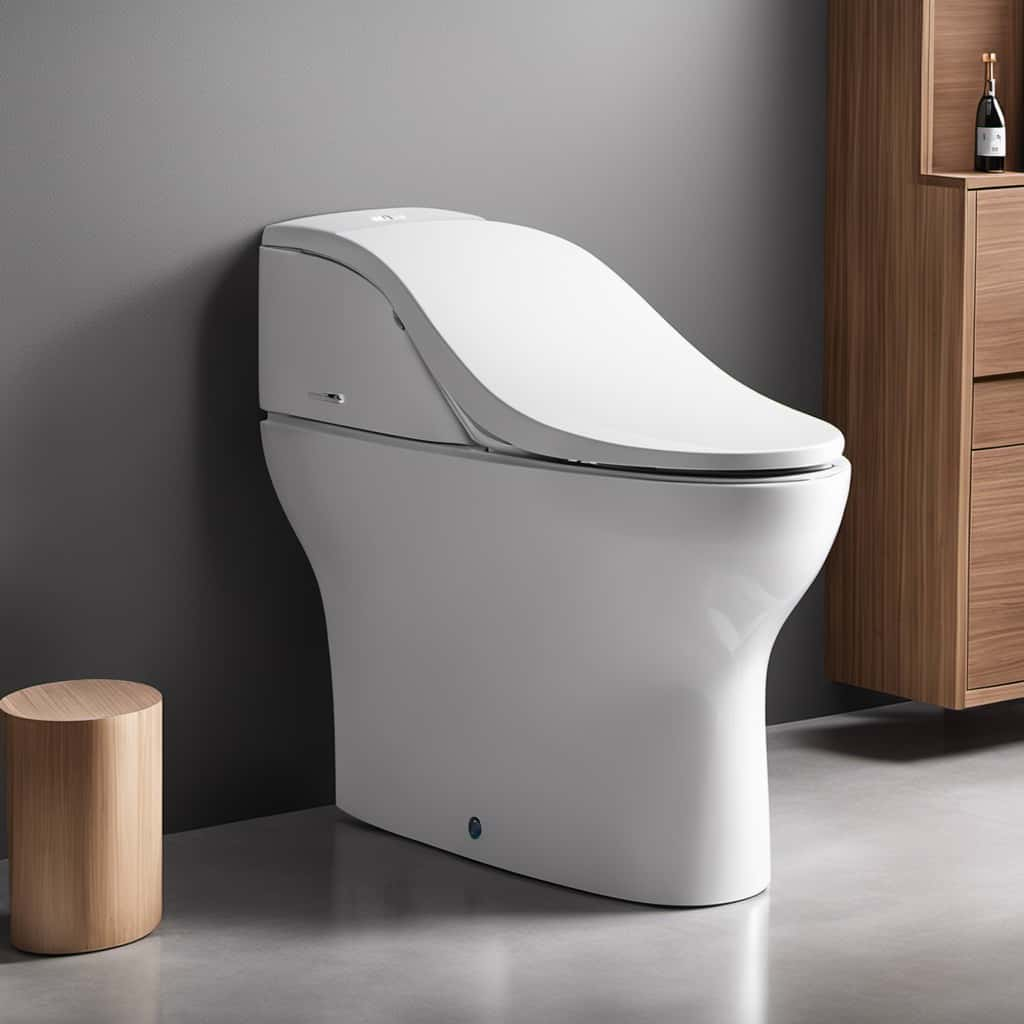Did you know that a constantly running toilet can waste up to 200 gallons of water per day? It’s not only an inconvenience but also a drain on your wallet.
In this article, I’ll explain the common causes of this frustrating issue and provide you with practical solutions. From a faulty flapper to a stuck float, we’ll cover it all.
So if you’re tired of the never-ending flow, keep reading to find out why your toilet won’t stop running and how to fix it.
Key Takeaways
- A faulty flapper valve is a common cause of a constantly running toilet.
- Checking for signs of wear or damage on the flapper valve and replacing it if necessary can help restore proper functioning.
- The fill valve plays a role in regulating water flow and may need to be replaced if malfunctioning.
- A leaky flush valve or a stuck float assembly can also cause a toilet to run constantly and may require repairs or replacements.
Common Causes of Constantly Running Toilets
One of the most common causes of toilets constantly running is a faulty flapper valve. The flapper valve is responsible for sealing the water tank and preventing water from continuously flowing into the toilet bowl.
If the flapper valve is damaged or worn out, it can result in a constant flow of water, leading to a running toilet. There are a few common signs that indicate a faulty flapper valve, such as a hissing sound, water continuously running into the bowl, or a water bill that is higher than usual.
To troubleshoot this issue, start by checking the flapper valve for any visible signs of damage or wear. If necessary, replace the flapper valve with a new one to restore proper functioning and stop the toilet from running constantly.
Faulty Flapper: A Culprit for Constant Running
The faulty flapper is often to blame when a toilet keeps running. A running toilet can be both annoying and wasteful, but luckily, it is a problem that can be easily resolved.
The flapper is a rubber or plastic component located at the bottom of the toilet tank. Its purpose is to seal the drain hole and prevent water from continuously flowing into the bowl. Over time, the flapper can become worn out or damaged, causing it to lose its ability to create a proper seal.
To troubleshoot a running toilet, the first step is to check the flapper for any signs of wear or damage. If necessary, a toilet flapper replacement can be easily installed by following the manufacturer’s instructions.
Trouble With the Fill Valve: Why Your Toilet Keeps Running
If your toilet keeps running, you may be experiencing trouble with the fill valve. The fill valve is responsible for regulating the water flow into the toilet tank after each flush. When it malfunctions, it can lead to constant running, wasting water and increasing your water bill.
There are a few signs that indicate a malfunctioning fill valve. Firstly, if you hear a continuous hissing sound coming from the toilet tank, it is likely that the fill valve is not shutting off properly. Additionally, if the water level in the tank is too high or too low, it could be a sign of a faulty fill valve.
To troubleshoot fill valve problems, start by checking the water supply line to ensure it is fully open. If that doesn’t solve the issue, you may need to replace the fill valve.
In the next section, we will discuss how to fix a leaky flush valve to stop the constant flow.
Fixing a Leaky Flush Valve: Stop the Constant Flow
I’ve been dealing with a constant flow of water in my toilet. After troubleshooting the fill valve, I’ve realized that the problem lies with a leaky flush valve.
A leaky flush valve can be caused by a variety of factors. These include worn out seals, a faulty flapper, or sediment buildup.
To fix this issue, I’ll need to repair the flush valve. This can be done by replacing the seals, adjusting the flapper, or cleaning out any sediment that may be causing the leak.
Causes of Toilet Leaks
To figure out why your toilet is constantly running, check for common causes of toilet leaks. There are a few potential culprits that could be causing the issue.
First, check for any cracks in the toilet bowl. If there are cracks, water can leak out and cause the toilet to continuously run.
Another common cause is water supply problems. Check the water supply valve to ensure it is fully open. If it is partially closed, it may not be allowing enough water to refill the tank properly, leading to a constant running toilet.
Additionally, check the flapper valve and the fill valve for any signs of wear or damage. These parts can deteriorate over time, causing water to continuously leak.
Repairing a Flush Valve
One way to fix a flush valve is by replacing the flapper with a new one. If you are experiencing a constantly running toilet, it can be caused by a faulty flapper that is not sealing properly. Here’s how you can repair it:
- Turn off the water supply to the toilet.
- Remove the tank lid and locate the flush valve.
- Disconnect the chain from the flapper and remove the old flapper.
- Install the new flapper and reconnect the chain.
Dealing With a Stuck Float: the Reason Your Toilet Won’t Stop Running
Check if the float in your toilet is stuck, as this could be the reason why it won’t stop running. Dealing with a stuck float can be frustrating, but there are troubleshooting tips to help fix a running toilet.
First, locate the float, which is usually a ball or cylinder attached to the fill valve. Make sure it moves freely up and down. If it’s stuck in the up position, it may be due to a buildup of mineral deposits or a faulty valve. To fix this, gently clean the float and the valve with vinegar or a descaling solution.
If the float is damaged, it may need to be replaced. By addressing a stuck float, you can effectively stop your toilet from constantly running.
Addressing Water Pressure Issues: Resolving the Constant Running Problem
When it comes to resolving the constant running problem in your toilet, there are a few key points to consider.
Firstly, checking the water pressure is essential as it can affect the functionality of the fill valve.
Adjusting the fill valve is another step to take, as it can help regulate the water level in the tank.
Lastly, if all else fails, replacing faulty parts such as the fill valve or flapper may be necessary to ensure your toilet stops running.
Checking Water Pressure
To determine if water pressure is causing your toilet to constantly run, you can start by checking the water pressure gauge. This simple step can help you troubleshoot the issue and find a solution.
Here are some key points to consider:
-
Checking the water level: Ensure that the water level in the tank is at the appropriate level. If it is too high or too low, it can affect the functioning of the toilet.
-
Inspecting for leaks: Look for any signs of leakage around the toilet, such as puddles or damp areas. Leaks can lead to continuous water flow and result in a running toilet.
-
Examining the flapper valve: The flapper valve is responsible for controlling the flow of water from the tank to the bowl. Make sure it is properly aligned and not worn out or damaged.
-
Cleaning the fill valve: Sediment or debris can accumulate in the fill valve, affecting its functionality. Take a moment to clean it and ensure smooth water flow.
Adjusting Fill Valve
In order to fix an issue with the fill valve, you’ll need to adjust it accordingly. The fill valve is responsible for controlling the water level in your toilet tank. If it is not adjusted correctly, it can cause your toilet to constantly run, wasting water and increasing your water bill.
Here are some steps to troubleshoot and adjust the fill valve:
- Turn off the water supply to the toilet.
- Remove the tank lid and locate the fill valve.
- Check for any debris or mineral deposits that may be affecting the valve’s performance.
- Adjust the water level by turning the adjustment screw or sliding the float up or down.
- Test the water level by flushing the toilet and observing the refill process.
- Repeat the adjustment process until the water level is at the desired height.
Replacing Faulty Parts
By replacing faulty parts in your toilet, you can effectively resolve any issues and prevent water wastage. Here are some key parts to check and replace if necessary:
-
Flapper: The flapper is responsible for sealing the toilet tank and preventing water from continuously flowing into the bowl. If it’s worn out or damaged, it may not create a proper seal, causing the toilet to run constantly.
-
Fill valve: The fill valve controls the water supply to the toilet tank. If it’s malfunctioning, it can lead to constant running. Replacing it can help restore proper water flow.
-
Float assembly: The float assembly regulates the water level in the toilet tank. If it’s not functioning correctly, it can cause the toilet to run continuously. Replacing it can help maintain the right water level.
-
Flush valve: The flush valve is responsible for releasing water into the toilet bowl during flushing. If it’s not closing properly, it can lead to a running toilet. Replacing it can solve the issue.
Regularly inspecting and replacing these faulty parts can save water and ensure your toilet functions properly.
Conclusion
In conclusion, dealing with a constantly running toilet can be a frustrating experience. However, by identifying the common causes such as a faulty flapper, a problematic fill valve, a leaky flush valve, or a stuck float, you can take the necessary steps to fix the issue.
It’s important to address water pressure issues as well, as they can also contribute to the problem. Remember, ‘Don’t let the water run down the drain, fix that toilet and save yourself from going insane!’
